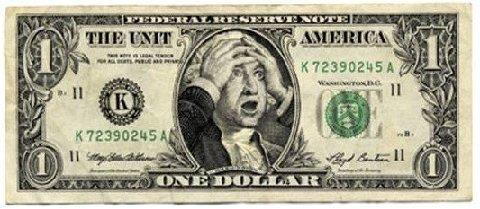Millions of Americans, who apparently have dim memories of 2008, again may be flirting with financial disaster. That’s what I recently learned in looking at second quarter credit card numbers. They show billions of dollars in new card debt—$28 billion in new card debt— added in the three months that ended June 30th. This contrasts with the first quarter when Americans reduced their card debt.
What does it mean?
It means millions of Americans are assuming that the nation and their households will face no more financial woes. It means they think the economy has straightened out and they can go back to running up big bills on their charge cards. It means some of them, many of whom skirted bankruptcy and some of whom had to file for court protection back in terrible days following the market meltdown of 2008, learned nothing. It means that many cardholders, and some banks that now are apparently once again free and easy about extending credit to all sorts of people with dubious incomes, are taking a big chance.
What’s interesting about the rise in card debt is that the second quarter traditionally is not usually the biggest period in the year for card debt. Usually it is the last three to six months of the year. That’s when holiday buying usually drives up card debt.
In a story I recently wrote for the New York Post Sunday Business section, a credit card industry observer said the average American household, if trends continue, will have $7,000 of card debt by the end of the year.
Mein Gott! $7,000.
Consider seven thousand dollars of credit card debts, the most inefficient and risky way to borrow (Risky for the borrower because he or she usually pays a high rate of interest. Risky to the card company because a credit card debt is “unsecured.” That means it has no collateral backing it).
Seven thousand dollars is a lot of money to be in red when one considers that many of those poor souls are paying 20 percent interest. That means, even if one doesn’t add anything to the debt, if one just pays the interest each month and never touches the principal, that’s $1,400 in interest payments over the course of a year. That $1,400 buys you nothing. It isn’t even a tax write-off, unlike the interest on most mortgages, whose retirement will provide the property owner with a tangible asset that can be sold or a place to live for life.
Is $1,400 in interest payments that buy nothing really how you want to spend your hard earned money this year or any year?
This is crazy. This is meshuggah. This is the road to financial ruin, a road many Americans, and Europeans, went down some six years ago.
In case some of my readers forget, let me remind them of some of the low lights of 2008. This was a year when it seemed the United States was about to sink into a depression and drag others down with her (Actually countries like Greece, Italy and Portugal did a good job of self-destructing on their own account). Several bad events came together at the same time: The credit card default rate spiked as many Americans, some suddenly jobless and having problems for the first time in their lives finding another job, couldn’t pay their card bills.
Some of these same people lost their homes, whose value was so low that they were said to be “underwater.” That is the amount of equity in their homes—and many had been heavily mortgaged—-was less than what they owed the banks. Some banks foreclosed and sold the homes. But the people who took out the mortgages and lost their homes were, in some cases, still on the hook. They still owed the banks more money because the house sale at low prices didn’t cover what was left on their mortgages. The banks were stuck with homes that had little value as lots of people were all trying to sell homes at the same time (Too many sellers, not enough buyers. That’s a formula for driving down prices).
Some card issuers also saw their business blow up as the number of people who couldn’t pay—and card issuers always hold a reserve for uncollectables but this time the reserves often were inadequate as the rate of failures rose dramatically—-threatened to take down some card issuers and other financial institutions.
The domino effect went beyond the usual bad debt problems. Indeed, some reckless financial institutions were on the verge of collapsing and effectively made the case to the federal government that they were “too big to fail;” that if they failed they would bring down the entire economy so the taxpayers had to save them. (That is unfortunate, I believe, because it triggers a moral hazard problem in which some financial institutions become the virtual wards of the state. But that is for another column).
Here the issue is not the big picture. I write today of individual money management. And I believe that individual responsibility is the key to making it work. The government, unfortunately, took care of some huge, politically connected, financial institutions in 2009. But it is not going to take care of you since you didn’t contribute $20 million to President Obama or Governor Mitt Romney or some career pol with an itchy palm.
Don’t let yourself get into this financial swamp. Don’t run up big credit card bills. Here is the sensible way to use your credit cards and not get caught up in the next wave of financial disaster, which might be right around the corner. It is the advice of someone who is an observer of the card industry for years: “When you charge something, if you can’t afford to pay it off in its entirety when the bill comes, then don’t charge it.”
That’s sound advice from someone who has a very good memory of 2008.
![]()
